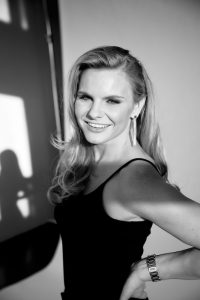Just over half a year since raising $159.28 million CAD, Clearbanc has raised an additional $393 million CAD ($300 million USD) to help scale its alternative fundraising model for entrepreneurs. The recent round comes in two parts: a $65 million CAD ($50 million USD) equity round and a $328 million CAD ($250 million USD) financing facility, which will be put towards funding Clearbanc’s portfolio companies.
“We recognized Clearbanc had an opportunity to be the clear winner in a new emerging category of financing entrepreneurs.”
-Dan Nova, Highland
The equity investment was led by first-time investor Highland Capital Partners, with participation from existing investors iNovia and US-based Emergence Capital. Dan Nova, a partner at US-based Highland, will be joining Clearbanc’s board of directors (Nova had previously invested in ThredUp, Ask Jeeves, and MapQuest). The financing facility (being called “Fund III”), was led by financial services provider Arcadia Funds, with participation from returning investor Upper90 Ventures.
While Clearbanc’s funding model is predicated on not taking equity stakes away from founders and entrepreneurs, its own equity round will be put towards growing the company’s sales team, as well as helping with international expansion. Michele Romanow, president and co-founder of Clearbanc, told BetaKit the company is looking to move its model into new markets with less developed venture capital ecosystems, which can be “even more difficult” to raise funding in, compared to North America.

“Venture capital is, in many ways, elite capital,” she said. “To get venture capital funding, you need to have gone to the right school, describe your business in the right way, be in the right circle of people … it all has to be from a network.” Romanow, a repeat entrepreneur herself, noted that Clearbanc has already been “running tests” of its model in Europe and Latin America.
With three large capital injections (totalling around $552 million CAD) in less than a year, Clearbanc’s alternative funding model has clearly gained traction among entrepreneurs and investors alike. The Toronto-headquartered company’s model is designed to offer financing while helping entrepreneurs retain equity. Clearbanc offers growth capital in the form of revenue share agreements that see the recipient paying back an agreed-upon percentage of their revenue until the capital is fully repaid (see a breakdown of Clearbanc’s revenue share agreement model here).
“Founders are using the most expensive capital, which is always equity … [to] produce something [like digital marketing spend] that, by definition, is repeatable and scalable. So if we could just fund that part of the business, they would be more successful,” Romanow stated.
Clearbanc is among a growing group of enterprises that have begun to offer alternatives to traditional VC funding models. Seattle-based Lighter Capital offers startups revenue-based financing, as well as loans and lines of credit options. According to Crunchbase, Lighter has raised $140 million USD to date. Corl, Toronto-based, is another revenue share model financier, but has yet to raise amounts rivalling Clearbanc.
Democratizing access to capital with AI
Since launching, Clearbanc has seen growing interest from entrepreneurs. In December, the company saw more than 1,000 companies request capital in just four weeks following its $92 million CAD funding round. This prompted an additional $67.28 million CAD investment from Upper90, the fund of former Seamless (now GrubHub) co-founder Jason Finger.
“[This] clearly indicates that the model is working, we’re finding a ton of customers where [revenue share] is a good fit,” Romanow recently told BetaKit.
“The more options we’re giving founders, the better it is for the ecosystem.”
-Michele Romanow
One factor driving interest and market fit may be Clearbanc’s method of sourcing businesses. The financial services startup chooses who to invest in through machine learning: businesses plug in their data sources to Clearbanc’s platform, including payment processor data, digital ads, and e-commerce accounts, allowing Clearbanc’s algorithms to evaluate financial health and revenue trajectory.
“It’s not a human making that decision, we have no humans and investment associates on [our team], it’s all data science and machine learning,” Romanow explained. “One of the other major things that we’re doing is we’re democratizing access to capital, which is so important if you care about backing and growing entrepreneurs.”
Romanow said Clearbanc has already seen how this model can help underrepresented entrepreneurs. As a result of its machine learning process, Clearbanc claims to have backed eight times more women than the venture capital industry average. Romanow, who joined Clearbanc as a co-founder in 2016, noted that this did not come from any form of sourcing or recruiting, “it was literally just [that] we took the buyer out of [the decision-making process],” she stated.
RELATED: Despite more Canadian women VC partners, LP dollars still go to all-male funds
The startup also claims to have financed companies in 43 different states in the US, whereas typically, according to PwC’s MoneyTree 2018 report, around 80 percent of all venture capital funding only goes to four regions: San Francisco, New York, Silicon Valley, and New England.
“This business couldn’t have been built without the data sources,” Romanow explained. “So we haven’t seen anyone doing exactly what we’re doing, but I think the more options we’re giving founders, the better it is for the ecosystem.”
Nova echoed Romanow’s sentiment, calling the “disruptive nature” of Clearbanc’s offering “a very powerful model that is growing very rapidly.”
“We realized Clearbanc had an opportunity to be the clear winner in a new emerging category of financing entrepreneurs,” he told BetaKit.
Bringing capital-as-a-service to new verticals
Launched in 2015 by former Nymi and Top Hat executive Andrew D’Souza, Clearbanc, to date, has focused on financing e-commerce businesses, mainly B2C. The money is meant to go towards easily repeatable or scaleable tasks such as digital marketing spend and customer acquisition. However, Romanow indicated plans for Clearbanc to expand into new verticals.
“We see Clearbanc being able to fund anything that repeatedly drives revenue in a business. For e-commerce that could be digital ads, shipping, or inventory. For B2B SaaS that could be sales commissions,” she stated.

While Romanow did not specify exactly what verticals Clearbanc plans to expand into, she did note that any part of a business that is “repeatable” and directly tied to revenue is something that Clearbanc could potentially fund.
Currently operating in the US and Canada (with the majority of its portfolio in the US), Clearbanc has already invested in more than 1,000 companies. Just over halfway through 2019, this puts Clearbanc well on its goal of investing $1 billion in 2,000 businesses by the end of this year. Romanow noted that, outside its newest round, Clearbanc does not see the need to be raising any additional capital to support this goal, explaining that every dollar one of Clearbanc’s portfolio companies pays back is then deployed into a new company. With the investments its made already this year, Clearbanc expects those 1,000 companies to generate a collective $1.5 billion in revenue.
Along with its $394 million in funding, Clearbanc also announced a new ‘Venture Partner Network,’ looking to give its portfolio companies access to financial and strategic knowledge that typically comes with taking capital from a traditional VC fund.
The network currently has almost a dozen VCs, including Romanow and Finger, as well as Ryan Hoover of Product Hunt, Jesse Horwitz of Hubble Contacts, Morgan Hirsch of Public Goods, Harry Stebbings of 20 Minute VC, Ruma Bose of Humanitarian Ventures, and Gary Vaynerchuck of VaynerMedia. Clearbanc plans to continue growing the network throughout the year, looking to add partners from “key industry verticals.”
“I think we’re building a new asset class,” Romanow stated. “This can be bigger than the venture capital asset class, to be honest, because we’re just so much broader. Venture capital is designed to serve less than one percent of business models, because it’s just so narrow … so I think we can be we can be a lot bigger.”


